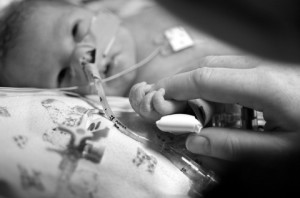Research Probes Multiple Causes of Cerebral Palsy
 According to a recent research study presented in the New England Journal of Medicine’s September 3, 2015 issue, many if not most cerebral palsy cases can be attributed to one or more prenatal factors and birth defects, rather than other commonly suspected causes, including asphyxia and birth injury.
According to a recent research study presented in the New England Journal of Medicine’s September 3, 2015 issue, many if not most cerebral palsy cases can be attributed to one or more prenatal factors and birth defects, rather than other commonly suspected causes, including asphyxia and birth injury.
The study’s authors examined the root causes of cerebral palsy in singleton births of 35 weeks of gestation or longer, the group in which almost 65% of all newborn cerebral palsy diagnoses occur.
Research explores cerebral palsy causes
Conducted by researchers hailing from the Children’s National Medical Center in Washington, D.C. And the National Institutes of Health, approximately 80 percent of all new diagnoses of cerebral palsy could be associated with and likely caused by substantial prenatal conditions. Those responsible for the study argue that fewer than 10 percent of cerebral palsy diagnoses were in fact attributable to labor and delivery injuries, particularly birth asphyxia. The authors contend that birth defects in fact play a much more significant role in cerebral palsy cases than do the types of circumstances and occurrences so often blamed for this particularly devastating outcome.
Specific prenatal influences identified as causes of cerebral palsy
The authors of this study suggest that there are multiple, distinct prenatal factors and birth defects responsible for a large number of cerebral palsy diagnoses, including thrombotic states, low gestational age at time of birth, placental issues, genetic concerns and fetal growth restriction prior to birth. Given these findings, the researchers are advocating heightened attention to and study of realms such as genetics, genomics, teratology and developmental neuroscience in order to foster a deeper understanding of cerebral palsy’s origins and possible methods of preventing it.
Remaining vigilant about all cerebral palsy causes
While this recent study clearly argues that the majority of cerebral palsy diagnoses are the result of prenatal factors and a variety of birth defects, it is important to bear in mind that an unacceptable number of babies each and every year are diagnosed with cerebral palsy due to avoidable medical negligence during the labor and delivery process.
Typical professional acts and omissions responsible for developmental delays and diagnoses of this type include:
- Failure to properly monitor mother and child during labor
- Failure to identify decline in fetal condition
- Improper or ill-advised administration of Pitocin or other labor drugs
- Botched handling of shoulder dystocia
- Failure to identify placental abruption, infections or fetal cord entanglements
- Delay in ordering caesarian delivery even when clinically indicated
There can be no doubt that this most recent research study on the root causes of cerebral palsy is vital, in that it may assist in the prevention and understanding of this often profoundly debilitating condition. At the same time, it is crucial that it not be allowed to overshadow the fact that an alarming number of children and families are permanently impacted by cerebral palsy that is demonstrably the result of negligence on the part of attending labor and delivery staff.
Gaining a comprehensive grasp of each and every mechanism of causation when it comes to cerebral palsy patients is the best way to lessen the incidence of such cases and facilitate justice for those already affected.
- Doctors Lounge, Birth Asphyxia Tied to Fewer Than 10% of Cerebral Palsy Cases, http://www.doctorslounge.com/index.php/news/pb/57848
- Medpage Today, Greatest Risks for Cerebral Palsy Occur Prior to Birth, http://www.medpagetoday.com/Pediatrics/GeneralPediatrics/53392
- Mayo Clinic, Cerebral Palsy, http://www.mayoclinic.org/diseases-conditions/cerebral-palsy/basics/definition/con-20030502
- National Institute of Neurological Disorders and Stroke, NINDS Cerebral Palsy Information Page, http://www.ninds.nih.gov/disorders/cerebral_palsy/cerebral_palsy.htm

 Resources
Resources
 Resources
Resources

